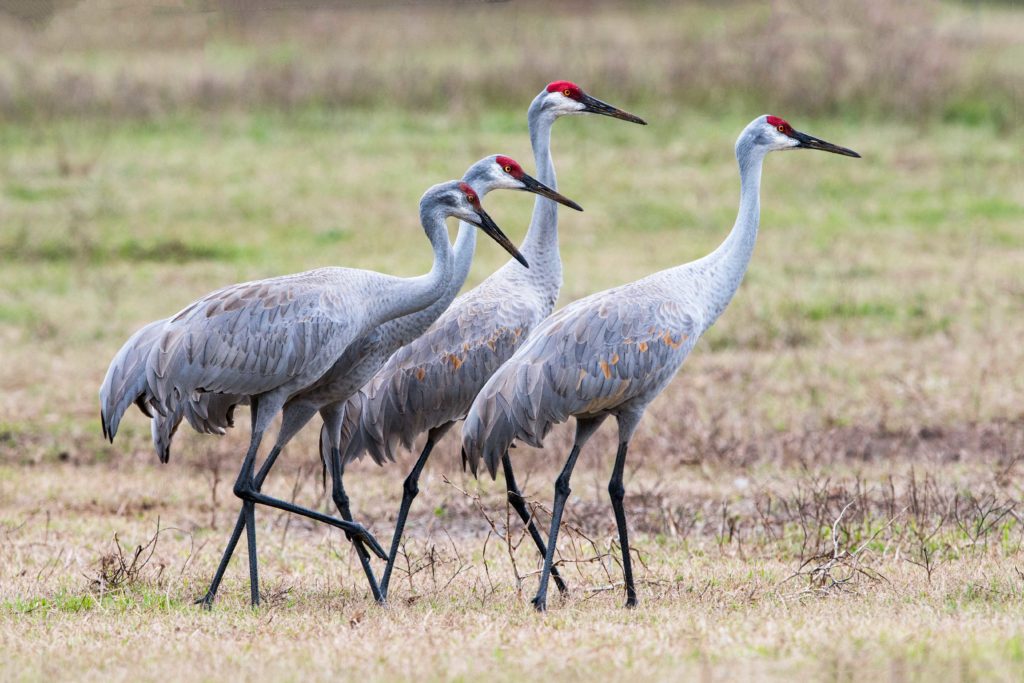Sandhill crane – This chatty crane has stood the test of time

Class: Aves
Territory: North America
Diet: Grains, small mammals, insects, reptiles
Lifespan: 20 years
Adult weight: 3-6 kg (7-13 lb)
Conservation status: Least concern
One of the more communicative species, the sandhill crane has a distinctive rolling cry that reverberates through the wetlands. They are able to convey meaning to one another through the length, strength, and volume of the calls they make, with different sounds being used for specific messages.
Sandhill cranes are one of the most ancient species in the family; fossils found from ten million years ago show that their physiology has changed very little in that time. Today, they are the most numerous and wide-ranging cranes in the world.
While many other cranes share nesting responsibilities, it is the male of this species that defends the nest. He will stand on guard looking out for any potential danger, ready to fight any unwanted visitors and protect his offspring.















